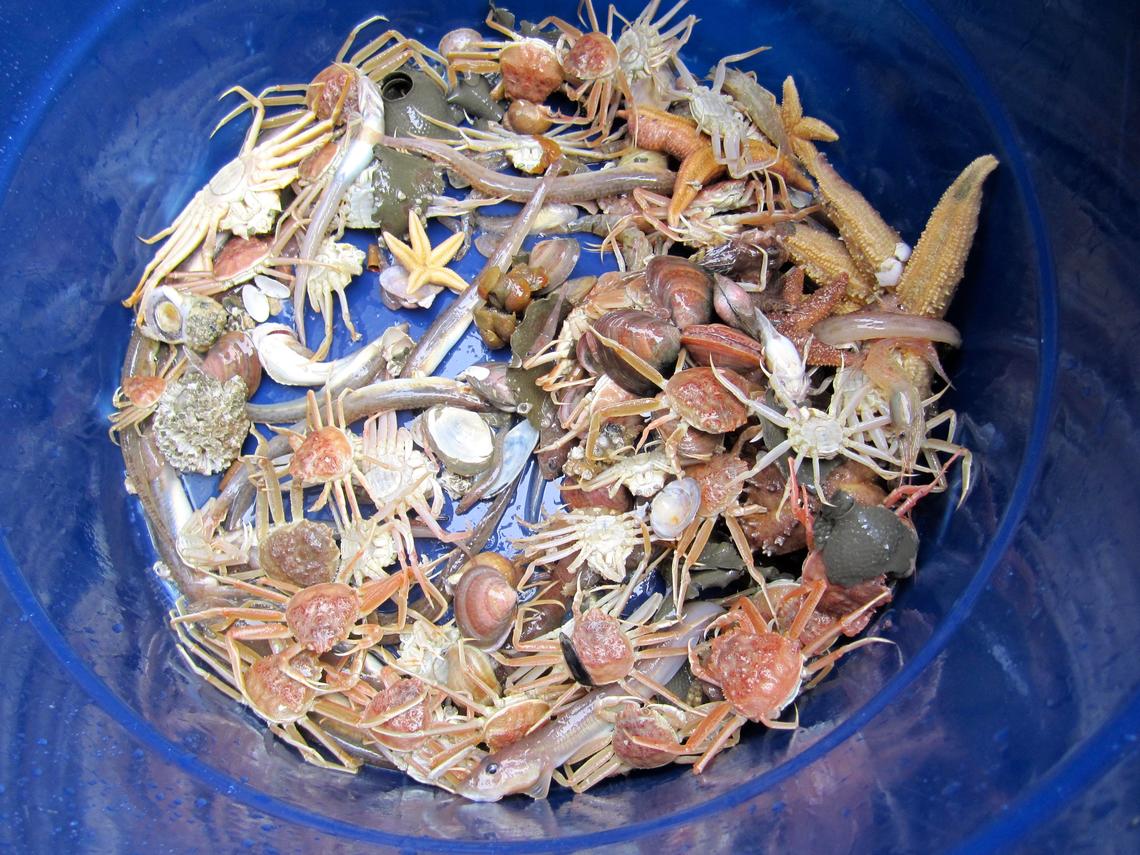The WaterWord: Benthic Zone
Definition:
- How low can you go? Well, no lower than this, anyway. The benthic zone is the lowest ecological zone in a water body, and usually involves the sediments at the seafloor. These sediments play an important role in providing nutrients for the organisms that live in the benthic zone.
Etymology:
- Benthic comes from the Greek word benthos, meaning “deep of the sea.” Zone, meanwhile, comes from the Greek word zone, meaning “belt,” or “girdle.”
Use/Significance in the Earth Science Community:
- The benthic zone is a unique ecosystem, and many of the organisms that live in it cannot be found elsewhere in the water column, especially in the deep ocean. Habitats like methane seeps and hydrothermal vents can be found in the benthic zone. In addition, the benthic zone is where all organic material from upper layers of the ocean end up.

Benthic invertebrates captured in a bottom trawl. This was from the Ecosystem Shifts in Arctic Seas project.Jannelle Trowbridge / USGS
U.S. Geological Survey/Schmidt Ocean Institute Use:
- USGS and SOI are collaborating on a research cruise off the coast of Oregon and Washington that will study methane seeps along the benthic zone. In addition to looking at the nature and chemistry of the seeps, scientists on this cruise will look at the kinds of creatures and organisms that live in the benthic zone along the cruise route.
- SOI has studied the benthic zone on many of its research cruises, and part of its equipment array is a series of landers that are meant to operate in the benthic zone.
- USGS scientists have looked at benthic environments all over the country, from the Atlantic and Pacific Oceans to inland rivers.
Next WaterWord: Authigenic

